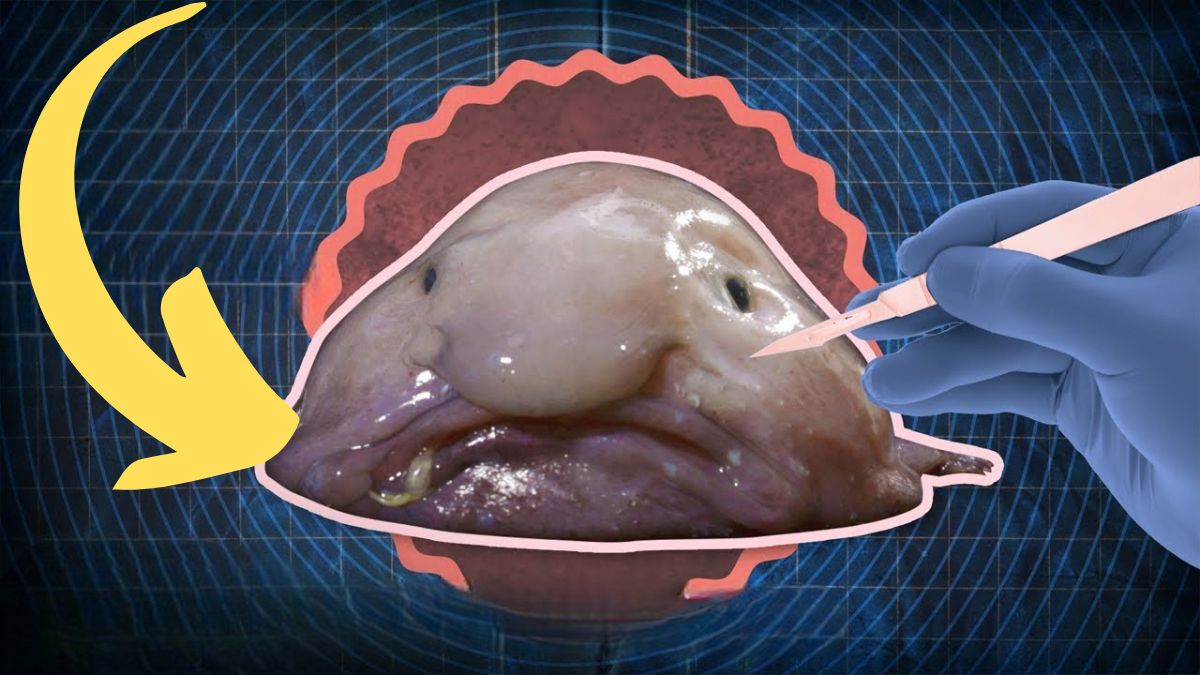
Box jellyfish, also known as sea wasps, are among the most venomous creatures in the world. Their tentacles contain toxins that can cause heart failure and death in just a few minutes. Box jellyfish stings are extremely painful and can result in death if not treated promptly. According to the National Oceanic and Atmospheric Administration (NOAA), box jellyfish stings are responsible for more deaths in the Philippines than any other marine animal. However, it is worth noting that deaths from box jellyfish stings are relatively rare, and many people who are stung by these creatures do not experience serious consequences. To avoid being stung by a box jellyfish, it is recommended to avoid swimming or wading in areas where they are known to be present and to wear protective clothing, such as a wet suit or stinger suit, if you must enter their habitat.
- Can you survive a box jellyfish?
- What eats the box jellyfish?
- What happens if you touch a box jellyfish?
- What are the chances of surviving a box jellyfish sting?
- What kills jellyfish?
- Can a box jellyfish see you?
- What's the deadliest jellyfish?
- How painful is box jellyfish?
- Can dead box jellyfish sting?
- How do you avoid getting stung by a box jellyfish?
- Can box jellyfish sting through clothes?
- Is there a cure for box jellyfish?
- How smart is a box jellyfish?
- Is there an antidote for box jellyfish?
Can you survive a box jellyfish?
It is possible to survive a box jellyfish sting, but it is important to seek immediate medical attention if you are stung. The toxins in the tentacles of a box jellyfish can cause serious injury or death if not treated promptly. The severity of the reaction to a box jellyfish sting can vary depending on the amount of venom injected, the location of the sting, and the individual’s sensitivity to the venom. Some people may experience only mild symptoms, while others may have a more severe reaction, such as difficulty breathing, chest pain, or shock.
If you are stung by a box jellyfish, the first step is to remove any tentacles that may be stuck to your skin. This can be done using tweezers, a credit card, or another object with a flat edge. It is important to avoid touching the tentacles with your bare hands, as this can result in stinging cells being released onto your skin. After the tentacles have been removed, rinse the affected area with vinegar to help neutralize the venom and prevent more stinging cells from being released. If vinegar is not available, you can use salt water or baking soda. If the person who was stung is experiencing severe symptoms or is unconscious, call emergency services immediately.
To prevent box jellyfish stings, it is recommended to avoid swimming or wading in areas where they are known to be present and to wear protective clothing, such as a wet suit or stinger suit, if you must enter their habitat. If you are in an area where box jellyfish are known to be present, it is also a good idea to carry a first-aid kit that includes vinegar or other substances that can be used to neutralize the venom.
What eats the box jellyfish?
Box jellyfish, also known as sea wasps, are eaten by a variety of marine animals, including:
- Sea turtles: Sea turtles are known to prey on box jellyfish, and they are particularly fond of the bells, or bodies, of the jellyfish.
- Fish: Some species of fish, such as tuna, swordfish, and snapper, are known to prey on box jellyfish.
- Cephalopods: Cephalopods, such as octopuses and squids, are known to prey on box jellyfish.
- Sea slugs: Some species of sea slugs, such as the Spanish dancer (Hexabranchus sanguineus) and the Glaucus atlanticus, are known to prey on box jellyfish.
- Seabirds: Seabirds, such as pelicans and gannets, are known to prey on box jellyfish, which they often catch and swallow whole.
It is worth noting that box jellyfish are not a major source of food for most marine animals, and they are generally only eaten when other prey is scarce. In general, marine animals are more likely to avoid box jellyfish due to their venomous tentacles and the risk of being stung.
What happens if you touch a box jellyfish?
If you touch a box jellyfish, you may be at risk of being stung by the creature’s tentacles. Box jellyfish are among the most venomous creatures in the world, and their tentacles contain toxins that can cause serious injury or death.
If you come into contact with a box jellyfish, it is important to remove any tentacles that may be stuck to your skin as quickly as possible. This can be done using tweezers, a credit card, or another object with a flat edge. It is important to avoid touching the tentacles with your bare hands, as this can result in stinging cells being released onto your skin.
After the tentacles have been removed, rinse the affected area with vinegar to help neutralize the venom and prevent more stinging cells from being released. If vinegar is not available, you can use salt water or baking soda. If you experience any severe symptoms, such as difficulty breathing, chest pain, or shock, seek medical attention immediately.
To prevent box jellyfish stings, it is recommended to avoid swimming or wading in areas where they are known to be present and to wear protective clothing, such as a wet suit or stinger suit, if you must enter their habitat. If you are in an area where box jellyfish are known to be present, it is also a good idea to carry a first-aid kit that includes vinegar or other substances that can be used to neutralize the venom.
What are the chances of surviving a box jellyfish sting?
The chances of surviving a box jellyfish sting depend on a number of factors, including the amount of venom injected, the location of the sting, and the individual’s sensitivity to the venom. Box jellyfish stings are extremely painful and can cause serious injury or death if not treated promptly. However, it is worth noting that deaths from box jellyfish stings are relatively rare, and many people who are stung by these creatures do not experience serious consequences.
If you are stung by a box jellyfish and experience mild symptoms, such as pain and redness at the site of the sting, you are likely to recover without any long-term effects. If you experience more severe symptoms, such as difficulty breathing, chest pain, or shock, it is important to seek medical attention immediately.
To increase your chances of surviving a box jellyfish sting, it is important to remove any tentacles that may be stuck to your skin as quickly as possible and to rinse the affected area with vinegar or another substance that can neutralize the venom. If you are in an area where box jellyfish are known to be present, it is also a good idea to carry a first-aid kit that includes vinegar or other substances that can be used to neutralize the venom.
What kills jellyfish?
There are several factors that can contribute to the death of jellyfish, including:
- Natural predators: Jellyfish are preyed upon by a variety of marine animals, including sea turtles, fish, cephalopods, sea slugs, and seabirds.
- Starvation: Jellyfish rely on small plankton and other microscopic organisms for food, and if these food sources are scarce, the jellyfish may starve.
- Desiccation: Jellyfish are composed of more than 95% water, and if they are exposed to dry conditions, they may become dehydrated and die.
- Disease: Jellyfish can be affected by various diseases and parasites, which can weaken or kill them.
- Environmental conditions: Changes in temperature, salinity, and other environmental conditions can affect the survival of jellyfish. For example, warmer water temperatures may cause jellyfish to become more active and increase their metabolism, leading to an increased demand for food and potentially leading to starvation.
It is worth noting that the lifespan of a jellyfish can vary widely depending on the species and the conditions it is exposed to. Some species of jellyfish can live for only a few days, while others can live for several years.
Can a box jellyfish see you?
Box jellyfish, also known as sea wasps, do not have eyes in the traditional sense. Instead, they have simple eye-like structures called ocelli, which can detect light intensity and direction. These ocelli are not capable of forming images or distinguishing shapes, so it is unlikely that a box jellyfish can “see” you in the way that humans do.
Despite their lack of true eyes, box jellyfish are able to navigate and locate prey using a complex network of sensory structures called rhopalia, which are located on their bell-shaped body and tentacles. The rhopalia contain sensory cells that are sensitive to light, temperature, and other environmental stimuli, which allow the jellyfish to orient themselves and detect the presence of nearby objects.
It is worth noting that box jellyfish are not typically aggressive and do not actively seek out humans as prey. They are generally found in deeper waters and are more likely to be encountered by divers or other people who enter their habitat. If you are in an area where box jellyfish are known to be present, it is a good idea to take precautions to avoid being stung, such as wearing a wet suit or stinger suit and avoiding swimming or wading in areas where they are known to be present.
What’s the deadliest jellyfish?
There are several species of jellyfish that are considered to be highly venomous and can cause serious injury or death if not treated promptly. Some of the most venomous and potentially deadly jellyfish include:
Box jellyfish (also known as sea wasps): These jellyfish are found in the waters of the Pacific and Indian Oceans, and their tentacles contain toxins that can cause heart failure and death in just a few minutes.
Portuguese man-of-war: These jellyfish are found in the waters of the Atlantic, Pacific, and Indian Oceans, and their tentacles contain toxins that can cause severe pain, nausea, vomiting, and difficulty breathing.
Irukandji jellyfish: These small, transparent jellyfish are found in the waters of the Pacific and Indian Oceans, and their tentacles contain toxins that can cause severe pain, nausea, vomiting, and difficulty breathing. In some cases, Irukandji syndrome, a potentially life-threatening condition, can occur after a sting.
Chironex fleckeri (also known as the sea wasp or box jellyfish): This species of box jellyfish is found in the waters of the Pacific and Indian Oceans, and its tentacles contain toxins that can cause heart failure and death in just a few minutes.
Cyanea capillata (also known as the lion’s mane jellyfish): This species of jellyfish is found in the waters of the Atlantic and Pacific Oceans, and its tentacles contain toxins that can cause severe pain, nausea, vomiting, and difficulty breathing.
It is worth noting that while these species of jellyfish are considered to be highly venomous, deaths from jellyfish stings are relatively rare. Most people who are stung by a jellyfish experience only mild symptoms, and serious reactions are typically limited to those who are allergic to the venom or have underlying medical conditions.
How painful is box jellyfish?
Box jellyfish, also known as sea wasps, are among the most venomous creatures in the world, and their stings are extremely painful. The tentacles of a box jellyfish contain toxins that can cause severe pain, nausea, vomiting, and difficulty breathing. In some cases, the pain from a box jellyfish sting can be so intense that it is described as “unbearable” or “indescribable.”
The severity of the pain caused by a box jellyfish sting can vary depending on the amount of venom injected and the individual’s sensitivity to the venom. Some people may experience only mild symptoms, while others may have a more severe reaction. In some cases, the pain from a box jellyfish sting can last for several hours or even days.
If you are stung by a box jellyfish, it is important to remove any tentacles that may be stuck to your skin as quickly as possible and to rinse the affected area with vinegar or another substance that can neutralize the venom. If you experience any severe symptoms, such as difficulty breathing, chest pain, or shock, seek medical attention immediately. To prevent box jellyfish stings, it is recommended to avoid swimming or wading in areas where they are known to be present and to wear protective clothing, such as a wet suit or stinger suit, if you must enter their habitat.
Can dead box jellyfish sting?

Box jellyfish, also known as sea wasps, can still sting after they have died, as their tentacles contain stinging cells that can remain active for several hours or even days after the jellyfish has died. These stinging cells, known as nematocysts, are located on the tentacles of the jellyfish and contain a coiled, venom-filled thread that is released when the nematocyst is triggered.
If you come into contact with a dead box jellyfish, it is important to avoid touching the tentacles, as this can trigger the release of the nematocysts and result in a sting. If you are stung by a dead box jellyfish, it is important to remove any tentacles that may be stuck to your skin as quickly as possible and to rinse the affected area with vinegar or another substance that can neutralize the venom. If you experience any severe symptoms, such as difficulty breathing, chest pain, or shock, seek medical attention immediately.
To prevent box jellyfish stings, it is recommended to avoid swimming or wading in areas where they are known to be present and to wear protective clothing, such as a wet suit or stinger suit, if you must enter their habitat. If you are in an area where box jellyfish are known to be present, it is also a good idea to carry a first-aid kit that includes vinegar or other substances that can be used to neutralize the venom.
How do you avoid getting stung by a box jellyfish?
To avoid being stung by a box jellyfish, there are several precautions you can take:
Avoid swimming or wading in areas where box jellyfish are known to be present: Box jellyfish are found in the waters of the Pacific and Indian Oceans, and they are more likely to be encountered by divers or other people who enter their habitat. If you are in an area where box jellyfish are known to be present, it is best to avoid swimming or wading in the water.
Wear protective clothing: If you must enter an area where box jellyfish are known to be present, it is a good idea to wear a wet suit or stinger suit, which can provide protection against stings.
Carry a first-aid kit: If you are in an area where box jellyfish are known to be present, it is a good idea to carry a first-aid kit that includes vinegar or other substances that can be used to neutralize the venom in case you are stung.
Avoid touching the tentacles: If you see a box jellyfish in the water, it is important to avoid touching the tentacles, as this can trigger the release of the nematocysts and result in a sting.
Remove any tentacles that may be stuck to your skin: If you are stung by a box jellyfish, it is important to remove any tentacles that may be stuck to your skin as quickly as possible. This can be done using tweezers, a credit card, or another object with a flat edge. It is important to avoid touching the tentacles with your bare hands, as this can result in stinging cells being released onto your skin.
Rinse the affected area with vinegar: After the tentacles have been removed, rinse the affected area with vinegar to help neutralize the venom and prevent more stinging cells from being released. If vinegar is not available, you can use salt water or baking soda.
Seek medical attention if necessary: If you experience any severe symptoms, such as difficulty breathing, chest pain, or shock, seek medical attention immediately.
Can box jellyfish sting through clothes?
Box jellyfish, also known as sea wasps, can potentially sting through clothing if their tentacles come into contact with bare skin. The tentacles of a box jellyfish contain stinging cells called nematocysts, which are triggered by contact with skin or other surfaces. When the nematocysts are triggered, they release a coiled, venom-filled thread that can penetrate clothing and cause a sting.
To protect yourself from box jellyfish stings, it is recommended to wear protective clothing, such as a wet suit or stinger suit, if you must enter an area where these creatures are known to be present. These types of clothing are made from materials that are resistant to stings and can provide an effective barrier against the tentacles of the jellyfish. If you are stung by a box jellyfish through your clothing, it is important to remove any tentacles that may be stuck to your skin as quickly as possible and to rinse the affected area with vinegar or another substance that can neutralize the venom. If you experience any severe symptoms, such as difficulty breathing, chest pain, or shock, seek medical attention immediately.
Is there a cure for box jellyfish?
There is no specific cure for box jellyfish stings, and treatment typically focuses on managing the symptoms and providing supportive care.
How smart is a box jellyfish?
Box jellyfish, also known as sea wasps, are not considered to be particularly intelligent animals. They do not have a centralized brain or a complex nervous system, and they are believed to be capable of only simple behaviors, such as reacting to stimuli and moving towards or away from objects.
Despite their simple nervous systems, box jellyfish are highly adapted to their environment and are able to navigate and locate prey using a complex network of sensory structures called rhopalia, which are located on their bell-shaped body and tentacles. The rhopalia contain sensory cells that are sensitive to light, temperature, and other environmental stimuli, which allow the jellyfish to orient themselves and detect the presence of nearby objects.
It is worth noting that intelligence is a complex trait that is difficult to define and measure, and it is not necessarily limited to animals with large brains or complex nervous systems. Many animals, including some species of insects and invertebrates, are capable of learning, problem-solving, and adapting to their environment, despite having relatively simple nervous systems.
Is there an antidote for box jellyfish?
There is no specific antidote for box jellyfish stings, and treatment typically focuses on managing the symptoms and providing supportive care.
Explore:



![Moon Jellyfish has [ Hidden Secrets ] You don't know moon jellyfish](https://spaceupper.com/wp-content/uploads/2022/11/1-1.jpg)



